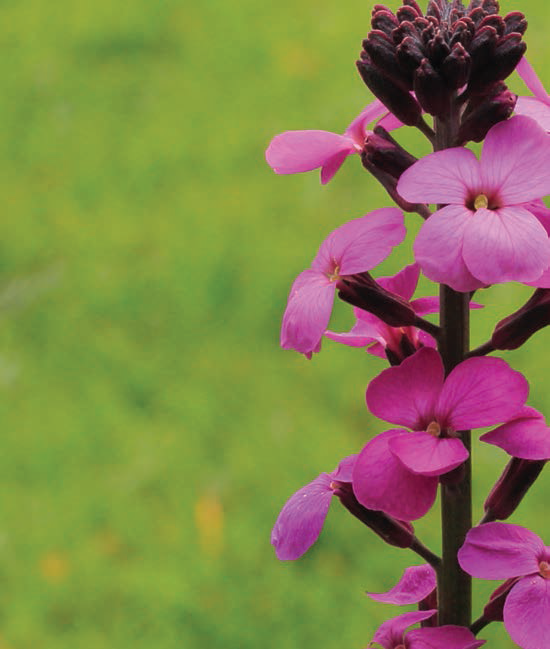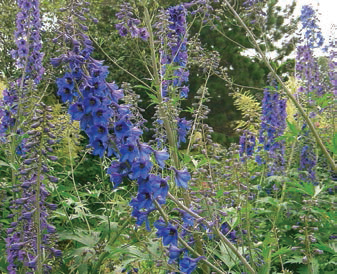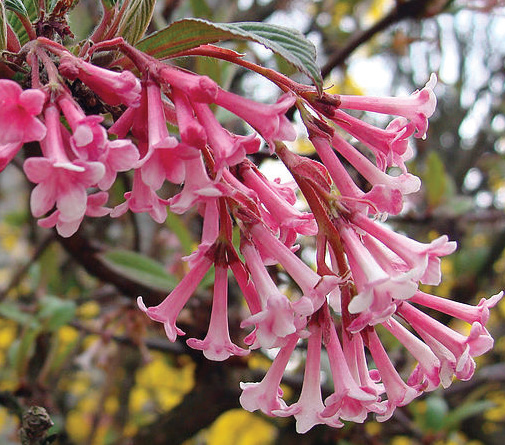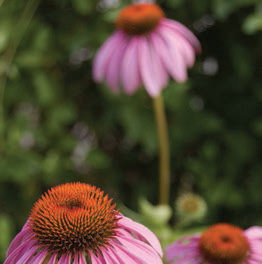Ireland has a wealth of collective horticultural knowledge, but this knowledge is often lost or even ignored with successive generations repeating the planting mistakes of the past. This tendency for reinvention is compounded by limited access to plant specification information based on Irish experience and research. More often than not, professionals defer to UK texts for plants information.
Conducting and sharing this survey of preferred perennial plants used in the Irish landscape should be viewed as a first step toward building a user-generated data set to assist professionals in making sustainable decisions on plant use. We will shortly launch a web-based platform so the knowledge shared by survey respondents can continue to grow, evolve and reflect best practice for plant use.
No judgment is made by the magazine on the suggested plants. Instead, we hope the list will be user edited over time with professionals being able to share views on what is an intensely complex domain.
Horticulture Connected would like to extend a serious word of thanks to all those who took the considerable time to share their knowledge. Your willingness is an inspiration and should encourage others to follow suit.

THE DEMOGRAPHICS
Survey respondents represented a wide range of ages, professions, experience and locations. Of all those who completed the survey, 60% were male and 40% female. Age was more or less evenly spread across the 20-30, 30-40, and 40-50 ranges with 5% being over 60.
60% were located in Leinster with 20% in Munster and 10% each in Ulster and Connacht. Areas of professional specialty covered construction, maintenance, education, retail, design, nursery production, gardening, planning, tidy towns, horticultural therapy and community work. 30% had more than 10 years experience, 30% had less than five, while the remainder had more than 20 years of professional experience. All respondents had relevant qualifications with 20% having certificates, 20% with diplomas, 40% with degrees, 15% with Masters and 5% with Ph.D. qualifications. It was heartening to see such a range of represented.
IRELAND’S PREFERRED PERENNIAL PLANTS BY CATEGORY
For the purposes of simplicity and clarity, plants are listed only once and only plants which feature a genus and species are included.

PREFERRED DECIDUOUS PERENNIALSThe list below will need to be clarified for future expansion. Clarification is needed to differentiate between deciduous and herbaceous. Many of the suggested plants are more commonly referred to as herbaceous. This typically refers to die back of leaves and stems while deciduous refers to leaves, flower, and fruit parts which die off leaving a stem/branch structure. Apologies to respondents for confusion. Peony, Podophyllum, Phlox, Lupin (Lupinis) and Primula were also suggested but without cultivar. Some plants were moved from here to the next category. Betula pendula PREFERRED FLOWERING PERENNIALSThere were diversity and similarity in this category with a wider selection of plants and multiple mentions of Hosta, Hydrangea, Nepeta, Geranium and Rudbeckia Arisarum proboscideum PREFERRED SCENTED PERENNIALSNepeta featured strongly again here, closely followed by Dianthus and then Heliotrope, Primula, Phlox, Philadelphus and Rosa. Convallaria majalis PREFERRED PERENNIALS FOR STRUCTUREMuch diversity in responses in this category which is unsurprising given how subjective the concept of structure can be. All Genera of plants were suggested including, Spiraea, Dierama, Buxus, Angelica, Crocosmia and Calamagrostis. It was enlightening to have personal perceptions of plants challenged. Acanthus mollis PREFERRED TEXTURAL PERENNIALSAs the structure, the texture is also a subjective term and suggestions covered a wide range of Genus. Those not featuring full botanical names included, Rodgersia, all fern species, Aristolochia, Myosotidium, Hosta, Euphorbia and grasses. It was interesting that all suggestions were for small to mid-sized plants, which may imply that texture is commonly interpreted at a specific scale, rather than say plants such as Tamarix or Cotinus. Stachys was by far the most popular plant suggestion. Artemisia ‘Powis Castle’ PREFERRED PERENNIALS WITH A VARIETY OF DESIRABLE CHARACTERISTICSOnce again Nepeta is very popular, and Hosta, Rosa, Hydrangea, Cornus and Agapanthus also receive multiple mentions. Aquilegia ‘Magpie’ PREFERRED GROUNDCOVER PERENNIALSAjuga and Geranium were the most popular with respondents. Both received multiple mentions. Ajuga reptans PREFERRED DROUGHT TOLERANT PLANTSThere was limited input in this category with plants without full names including Agave, Sedum, ‘Epimedium‘ mentioned several times. Erysimum ‘Bowles’s Mauve’ was mentioned several times. Erysimum ‘Bowles’s Mauve’ PREFERRED DAMP SITE PERENNIALSSeveral plants only featured genus in this category and they included Iris, Hydrangea, Eupatorium and Astilbe. Other suggestions included; Astilbe var. PREFERRED SLOPE SITE PERENNIALSVinca is by far the most popular sloped site perennial with respondents which were followed closely by Persicaria and Euphorbia. Hypericum and Agapanthus were also mentioned but without cultivar. Bergenia purpurascens PREFERRED DRY SHADE PERENNIALSVinca is again a popular choice, as is Euphorbia and Persicaria. Pulmonaria, Fritillaria and Brunnera were also suggested but without cultivar or species. Euphorbia amygdaloides var. robbiae |
PLANTS YOU FOUND TO THRIVE DESPITE WHAT THE BOOKS SAY
A couple of plants were suggested to thrive including Euphorbia mellifera, Eucryphia x nymansensis, Tanacetum balsamita, Cosmos atrosanguineus and one respondent noted that Erysimum lived far longer than was commonly stated in books.
WHAT YOU’D LIKE TO SEE MORE OF IN THE IRISH LANDSCAPE
Perennials, in general, would seem to be the order of the day. In terms of specific suggestions, they include Euphorbia, Hypericum, Filipendula, Coronilla valentina subsp. glauca, Myrtus ugni, Geum ‘Prinses Juliana’, Phlomis russeliana, Salvia nemorosa and Nerine.
PLANTS YOU NO LONGER USE DUE TO INVASIVENESS
It is interesting that some of the plants no longer used are also plants which feature as preferred species and ones you’d like to see more of, specifically Euphorbia.
Other plants no longer used include Stipa arundinacea, Lysimachia punctata, Oryzopsis hymenoides, Persicaria ‘Red Dragon’, Houttuynia, Miscanthus and Solidago.
PERENNIALS YOU NO LONGER USE DUE TO POOR PERFORMANCE
Once again it is interesting that some respondents have stopped using some of the most frequently referred to plants. Poor performers no longer on your planting plans include; Echinacea, Gladioli, Delphinium, Astilbe, Erigeron, Penstemon, and Acanthus mollis.
GENERAL COMMENTS AND POTENTIALS FOR FUTURE RESEARCH
One respondent noted that the survey was too narrow in scope and that a review of projects might yield more robust data. Another suggested a comparison between perennials being sold into the retail and wholesale sectors. The question was raised as to whether growers were deliberately focusing on nonhardy species in order to encourage repeat sales, a question frequently levelled at interior plant growers.
CONCLUSION
This survey was intended as a starting point and nothing more. The complex variables involved inappropriate plant specification remains a huge challenge and explain why we tend toward the use of UK literature. No doubt you will have thoughts on the plants suggested and perhaps have additions of your own. We hope so. We will shortly launch a forum dedicated to this subject, where you can add your own suggestions and comments.
Sincere thanks for taking the time to input into this survey. ✽






